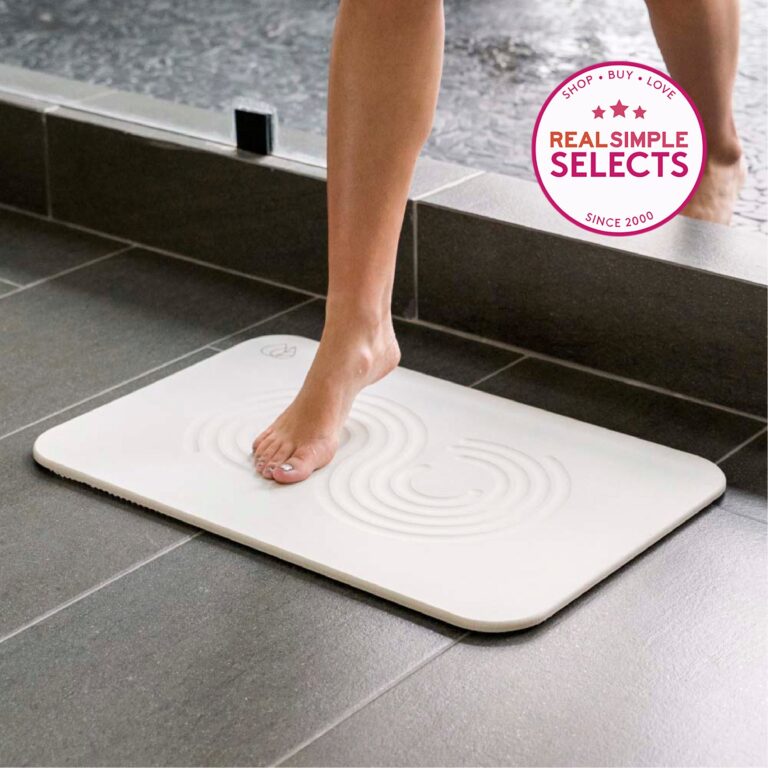Can You Vacuum Wet Carpet? 5 Safe Ways to Clean and Dry It Quickly
Can you vacuum wet carpet? It’s a question many people ask when faced with a wet mess, and while the instinct may be to grab the nearest vacuum and clean it up, doing so can lead to significant damage. Vacuuming a wet carpet is not as straightforward as it may seem, and it requires specific equipment and care to prevent problems like mold, electrical issues, or damage to your vacuum cleaner.
In this guide, we’ll cover everything you need to know about vacuuming wet carpets, the best tools to use, and how to handle a wet carpet safely. By the end, you’ll have a clear understanding of how to properly address the situation and avoid any costly mistakes.
Why You Shouldn’t Vacuum Wet Carpet with a Regular Vacuum
It might be tempting to use your standard vacuum cleaner on a wet carpet, but this is not a safe practice. A regular vacuum is designed to handle dry dirt and dust, not the moisture found in a wet carpet. Using a standard vacuum on wet carpet can lead to several issues, including:
Electrical Hazards
Water and electricity are a dangerous combination. Moisture can short-circuit your vacuum’s electrical components, leading to potential electrical shock. This poses serious risks to your safety and the safety of others in the area. If water gets into the vacuum’s motor or wiring, it can cause permanent damage, rendering the vacuum useless or dangerous to use.
Damage to the Vacuum
Vacuuming wet carpets with a regular vacuum can damage the vacuum in several ways. Water can corrode the vacuum’s motor and internal parts, especially if it’s not designed to handle moisture. Over time, the motor can burn out, and filters can get clogged with wet debris, leading to poor suction and performance. In some cases, rust can also form on metal parts, further damaging your vacuum cleaner.
Ineffective Cleaning
Standard vacuums aren’t built to handle liquids, so using one on wet carpet is unlikely to be effective. The vacuum won’t be able to remove moisture properly, and in some cases, it can push water deeper into the carpet fibers, making the situation worse. This leaves the carpet damp, which can cause mold or mildew growth if not addressed properly.
Can You Use a Wet/Dry Vacuum for Wet Carpets?
While a regular vacuum is unsuitable for wet carpet, a wet/dry vacuum (also known as a shop vac) is the perfect tool for the job. These vacuums are specifically designed to handle liquids, making them ideal for removing water from carpets and other surfaces.
What Makes Wet/Dry Vacuums Suitable?
A wet/dry vacuum uses a powerful motor and special filters to safely suck up liquids without causing damage to the machine. The key advantage of using a wet/dry vacuum is that it can handle both wet and dry debris, unlike traditional vacuums. Whether it’s a spilled drink or a flooded carpet, a wet/dry vacuum can remove moisture effectively without the risks associated with regular vacuums.
How to Use a Wet/Dry Vacuum on Wet Carpet
When using a wet/dry vacuum to clean a wet carpet, follow these steps to get the best results:
- Set Up the Wet/Dry Vacuum: Make sure your wet/dry vacuum is set up with the correct attachments for carpet cleaning.
- Vacuum the Excess Water: Slowly move the vacuum nozzle over the wet carpet to extract as much water as possible. Ensure that the vacuum’s hose is deep enough in the carpet to suck up as much liquid as possible.
- Empty the Tank Regularly: Wet vacuums typically have a tank that fills up as they collect moisture. Empty the tank frequently to prevent it from overflowing.
- Blot with Towels: After vacuuming, use absorbent towels to blot any remaining moisture and soak up any excess water from the carpet’s surface.
How to Safely Dry a Wet Carpet After Cleaning
Once you’ve removed most of the water with a wet/dry vacuum, it’s crucial to dry the carpet thoroughly to prevent mold and mildew growth. Here’s how you can effectively dry a wet carpet after cleaning:
Use Fans and Dehumidifiers
Fans and dehumidifiers are essential tools for speeding up the drying process. Set up multiple fans in the room to increase airflow and help moisture evaporate. You can also use a dehumidifier to remove excess humidity from the air, which will help the carpet dry faster.
Lift Furniture Off the Carpet
If possible, move furniture off the carpet or place it on blocks to allow air to circulate around the carpet. The furniture can trap moisture in the carpet, slowing down the drying process. By lifting furniture, you allow the carpet to dry evenly and more effectively.
Ensure Good Ventilation
Open windows and doors to improve air circulation. Good ventilation helps to dry the carpet faster and prevents the buildup of moisture that could lead to mold. If the weather is warm and dry, try to air out the room for several hours a day to speed up the process.
Monitor for Mold or Mildew
After the carpet has dried, be sure to check for signs of mold or mildew. These can develop if the carpet wasn’t dried properly or if excess moisture remained in the fibers. If you notice any musty smells or visible mold growth, you may need to call a professional cleaner to deep clean and restore the carpet.
The Dangers of Vacuuming Wet Carpet and How to Avoid It
Although using a regular vacuum on a wet carpet is not advised, it’s also important to consider the long-term effects of improper cleaning. If you don’t address wet carpets quickly and efficiently, you may face mold growth, foul odors, and permanent damage.
Mold and Mildew Growth
When carpets remain wet for too long, they become breeding grounds for mold and mildew. Mold can spread quickly in moist environments, and if left untreated, it can cause significant damage to your carpet and even your home’s structure. Mold can also pose health risks, particularly for people with respiratory issues or allergies.
Water Damage to Carpet Padding
In some cases, water can seep into the carpet padding beneath the carpet fibers. This padding is absorbent and can trap moisture, making it difficult to dry the carpet completely. If the padding isn’t addressed, it can lead to water damage, unpleasant odors, and mold growth.
Foul Odors
Damp carpets often develop a musty smell, especially if they aren’t dried promptly. This odor can linger in the carpet fibers and padding, even after the surface has dried. If this happens, you may need to consider deep cleaning or professional restoration to eliminate the odors.
What to Do If You Accidentally Vacuum a Wet Carpet
If you’ve already vacuumed a wet carpet with a regular vacuum, don’t panic. Here are a few things you can do to minimize the damage:
- Turn Off the Vacuum Immediately: If the vacuum was running when it encountered water, immediately turn it off to prevent further damage.
- Disassemble the Vacuum: Remove the vacuum’s bag, filter, and other parts to allow them to dry out. You may need to let them air-dry for a day or two.
- Check for Damage: If the vacuum seems to be working poorly after vacuuming wet carpet, check for signs of damage, such as reduced suction, unusual noises, or electrical issues.
- Consider Professional Repair: If you notice any issues or if the vacuum no longer works, it may need to be professionally repaired or replaced.
Best Tools for Wet Carpet Cleaning: Wet Vacuums vs. Regular Vacuums
To make sure your carpet cleaning is effective and safe, it’s essential to choose the right tools. Wet vacuums and regular vacuums have distinct differences that make them suitable for different tasks.
Wet Vacuums
As previously mentioned, wet vacuums are specifically designed to handle liquids. They use powerful suction to remove water from wet surfaces like carpets, tiles, and upholstery. Wet vacuums are a great investment if you frequently deal with wet messes, as they offer the best performance for water removal.
Regular Vacuums
Regular vacuums, on the other hand, are designed only for dry debris. They lack the ability to handle liquids, which is why using them on a wet carpet is unsafe. They may also struggle with heavy debris or moisture, and attempting to vacuum a wet carpet could damage the machine permanently.
Professional Help: When to Call in Experts for Wet Carpet Cleaning
In some situations, DIY wet carpet cleaning methods may not be enough, especially if the carpet is heavily saturated or if mold begins to form. When this happens, it’s time to call in professionals.
Why You Might Need Professional Help
Professional carpet cleaners have specialized tools and expertise to address serious water damage. They can ensure that your carpet is properly dried, sanitized, and restored to its original condition. Additionally, professionals can inspect your carpet and padding for mold and provide deep cleaning services that can save your carpet and your health.
Choosing the Right Professional Cleaning Service
When choosing a professional cleaning service, be sure to select a reputable company with experience in water damage restoration. They should have the proper equipment, such as powerful wet vacuums, dehumidifiers, and specialized cleaning agents, to effectively treat your carpet.
Conclusion: Safely Handling Wet Carpets and Avoiding Damage
In conclusion, vacuuming a wet carpet with a regular vacuum is not safe and can lead to serious consequences. Always use a wet/dry vacuum for wet carpet cleaning to ensure the safety of both the carpet and your vacuum cleaner. After cleaning, make sure to dry the carpet thoroughly and monitor for mold or mildew growth. If you’re unsure or face significant water damage, calling in professionals can ensure that your carpet is restored to its best condition.
By following these tips, you can keep your carpet in great shape and avoid the risks associated with improper cleaning. Always remember that quick action and the right tools are essential when dealing with wet carpets.




